Turn the Bible into a map
An in-depth trip to Israel and Jordan
Picture/Yin Jialian

Editor's note: Dr. Yu Guoliang is the former editor of the outreach unit of "The Kingdom of God" magazine. He has edited many outstanding outreach works in the past and has been well received. This article is his first trip to the Holy Land after his retirement, and it is a very "Guoliang style" travel note.
The CCIUSA, headquartered in Houston (CCIUSA, http://www.cc-us.org/), held a 15-day conference from April 25 to May 9, 2019. "In-depth trip to the Holy Land of Israel and Jordan". The author was fortunate enough to participate and benefited a lot. I am deeply grateful for God's grace. I write this article to introduce the monuments in Jordan and Israel and summarize the reasons for the success of this in-depth trip for the reference of believers and organizations interested in organizing such trips.
1. Attractions in Jordan
Mount Nebo (Mt. Nebo) is northeast of the capital Amman, adjacent to the Moab Plain to the south, overlooking the Dead Sea. It is said that when the weather is good, you can see Israel as far as Jerusalem. Moses led the Israelites to walk in the wilderness for 40 years. Because he struck the rock twice and did not fully obey God's command, God did not allow him to enter the Promised Land. He could only overlook the Promised Land from this mountain. On this mountain stands a statue of a bronze serpent. At that time, the Israelites were in the land of Edom. Because their journey was very difficult, they complained about God and were punished by God. Many people were bitten by snakes and became sick and died. God told Moses to make a bronze snake and hang it on a pole. The Israelites would live if they looked at the bronze snake (see Numbers 21:4-9).
The name of the Dead Sea comes from its high salt content, which makes it difficult for organisms to survive. The Bible does not have a word for the Dead Sea, but it is called the Salt Sea (see Genesis 14:3). The general composition of salt in seawater is 4-6%, but it is 25%. Therefore, it is not easy for people to sink in it, so many hotels near the Dead Sea use this to attract tourists. It is also called the Sea of Arabah (see Joshua 3:16), Arabah meaning dry. It is also commonly known as the Sea of Lot by the Arabs because Lot once lived in Sodom near the Dead Sea (see Genesis Chapter 19). The Dead Sea is also called the Eastern Sea (see Joel 2:20). It is 400 meters below sea level. A large amount of river water flows into the Dead Sea every day, but there is no outlet. The weather around the Dead Sea is dry and sunny, and tens of thousands of tons of water are evaporated every day. There are shops selling skin care balms made from local Dead Sea salt.
Petra is located at the southern tip of Jordan. The entire city is built of rock. The Old Testament calls it Sela (see Judges 1:36; 2 Kings 14:7; Isaiah 16:1), which means stone. The name of Petra is very similar to that of Peter, and it was built in the 2nd century AD. In ancient times it was the capital of the kingdom of Edom and the Nabataean people. Petra is Edom in the Old Testament. The Book of Obadiah in the Bible records in detail the prophecies and reasons for the destruction of Edom. What attracts tourists is that in the majestic mountains, caves are carved into tombs, temples and rooms, and the buildings are breathtaking. Since it is only accessible by a very narrow winding road called a sig, visitors must be particularly careful and can enter by foot, carriage, horseback, camel, donkey, etc., or by golf cart. From the end of the snake path, you can reach the magnificent Al Khazna temple.
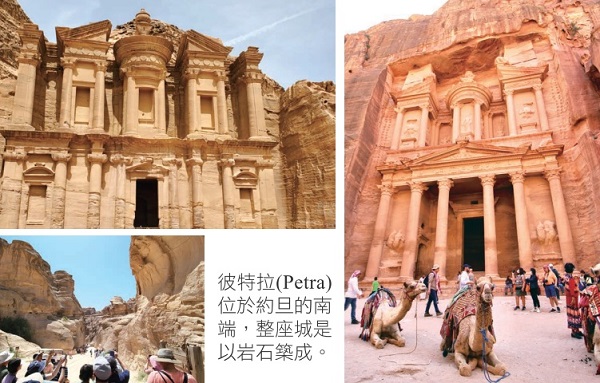
2. Attractions in Israel
Qumran was the secluded place where the Essenes lived in 125 BC. In AD 68, the Jews rebelled against Rome, which affected Qumran and was destroyed. The Essenes wanted to preserve the scriptures they had painstakingly copied, put them in earthen jars, and then stored them in a nearby cave. In 1947, a little shepherd boy accidentally discovered these manuscripts while searching for a lost sheep. They proved that the Bible was reliable and extremely valuable, so the "Dead Sea Scrolls Museum" was built near Jerusalem to collect them.
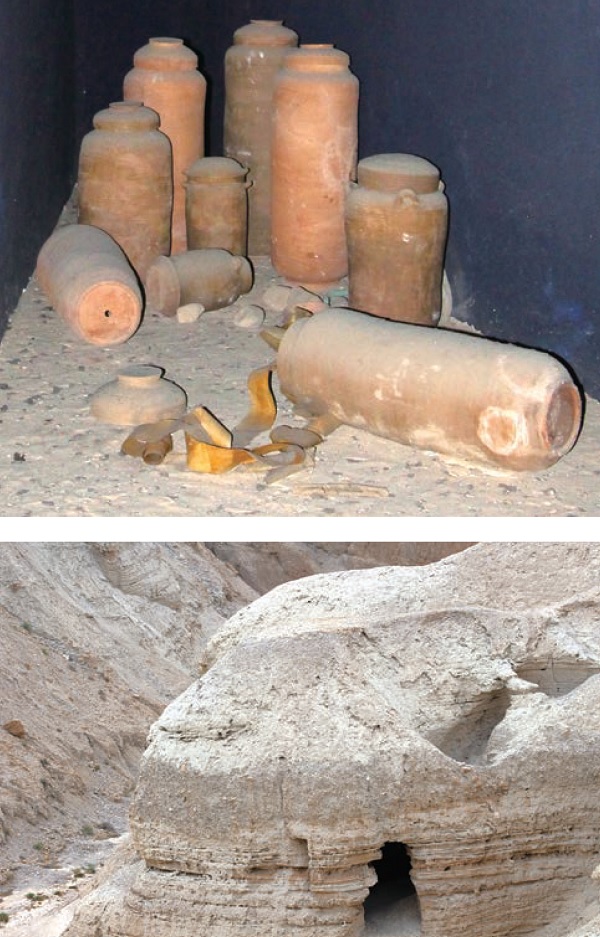
▲Qunlan Cave and the clay vase of ancient scrolls. Petra is located at the southern tip of Jordan. The entire city is built of rock.
Jericho is one of the oldest cities in the world. It is 224 meters below the sea level and can be regarded as the lowest city. It belongs to Benjamin. It was called the City of Palm Trees (see Deuteronomy 34:3). It was cursed in the Old Testament and could not be rebuilt (see Joshua 6:26); Elijah ascended to heaven here (see 2 Kings 2: 4); Elisha healed the water source here (refer to 2 Kings 2:19). It was a place where priests lived together, so it was also called the city of priests. On that day, Joshua led the Israelites around the city for seven days and finally captured Jericho (see Joshua 6:1-21). There is a famous mulberry tree in the city, and it is said that the tax collector Zacchaeus climbed this tree to see Jesus (see Luke 19:1-10).
3. Jerusalem and nearby attractions
Jerusalem (Jerusalem) "Jerusalem" means city, and "Salem" means peace (refer to Hebrews 7:2). Believers love Jerusalem because the gospel begins there (see Acts 1:8). And Jesus loved it and prayed for it with tears. The major events that are predicted to happen in this city, including the destruction of the temple (refer to Luke 21:24) and the reopening of the city walls and gates (refer to Psalm 24:7-10), are signs of the return of the Lord. Jerusalem was also called Jebus (see Joshua 18:28) because David captured the city below from the Jebusites. It is also called the City of God (cf. Psalm 46:4), the mountain of the house of the Lord (cf. Isaiah 2:3), Zion (cf. 2 Samuel 5:7), David City (refer to 2 Samuel 5:9), holy city (refer to Isaiah 52:1); God calls Jerusalem His city (refer to Isaiah 45:13). There are eight gates in the wall of Jerusalem, including Jaffa Gate, New Gate, Damascus Gate, Herod Gate, St. Stephen's Gate, Golden Gate, Dung Gate, and Zion Gate. One of the most important is the Golden Gate facing east, because it leads to the temple.
The Temple Mount is the highest point in Jerusalem, overlooking the entire city. This mountain can be seen from any angle in the city. The most eye-catching thing about the Temple Mount is the splendid semicircular mosque with golden dome, called the Dome of the Rock. There is an ancient large stone in the temple, which is said to be the place where Abraham sacrificed Isaac (see Genesis 22:2).
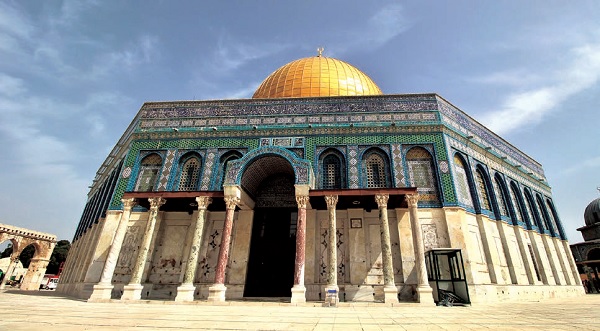
▲The Temple Mount is the highest point in Jerusalem.
The Western Wall is on the right side of the Dung Factory Gate, at the base of the Temple Mount. It is called the Wailing Wall because the Jews came here to weep after the Temple was destroyed (refer to Psalm 137:1). Many visitors wrote their prayers on small pieces of paper and stuffed them into the cracks in the wall.
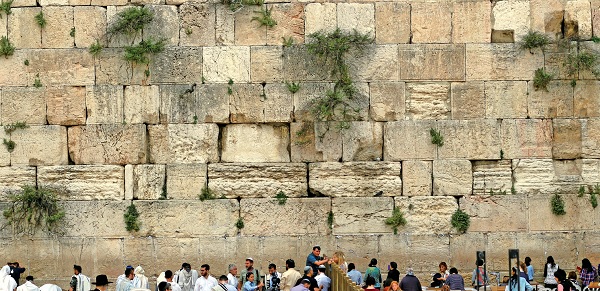
▲Wailing Wall.
Hezekiah's Tunnel and Pool of Siloam. The Waterway of Hezekiah (see 2 Kings 20:20), also known as the Waterway of Siloam, is 1,777 feet long and 6 feet deep. In 701 BC, King Hezekiah ordered two groups of laborers to build it separately. Later, the two tunnels were miraculously connected. It still brings water from the Gihon Spring outside Jerusalem to the ancient city of David. At the end of the tunnel is the Pool of Siloam (Siloam means sent). 2,000 years ago, Jesus told a blind man to go to a pool and wash himself, and he regained his sight (see John 9:7). Many of the group members had waded in Hezekiah's channel in the cave.
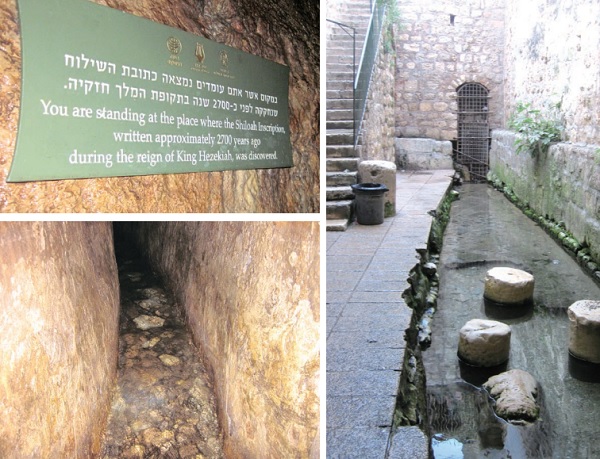
▲2,000 years ago, Jesus told a blind man to wash in the Pool of Siloam and he regained his sight.
4. Mount of Olives and nearby attractions
The Mount of Olives got its name from the fact that it is covered with olive trees. To the east of Jerusalem is the highest mountain surrounding the city. Olive trees can grow luxuriantly even in high temperatures and harsh winters (refer to Psalm 128:3). The psalmist used it to symbolize his loyalty to God (refer to Psalm 52:8); Paul used the grafting of olives to metaphorize the salvation of the Gentiles. Method (see Romans 11:24). Jesus taught his disciples to pray here, and He also prayed in the Garden of Gethsemane at the foot of the mountain. After His resurrection, He ascended to heaven here, and He will descend on this mountain when He returns (see Acts 1:10-12).
The Lord's Prayer Hall (Pater Noster) was built by Queen Helen during the Constantine era of the Roman Empire. It is located next to the Ascension Heaven. It is said that Jesus taught his disciples to pray here. According to the Bible, Jesus taught his disciples to pray in two different places. One place was spoken during the Sermon on the Mount on the Mount of Beatitudes (refer to Matthew Chapters 5-7), and the other place was in a cave on the side of Ascension Heaven (refer to Luke 11:1-4). The Latin name of the church built here is PATER NOSTER, which means "our Father". It is the first sentence of the Lord's Prayer, so it is translated as the Lord's Prayer Hall in Chinese. There are more than 150 murals with the Lord's Prayer written on the walls of the church's corridors, including in Chinese.
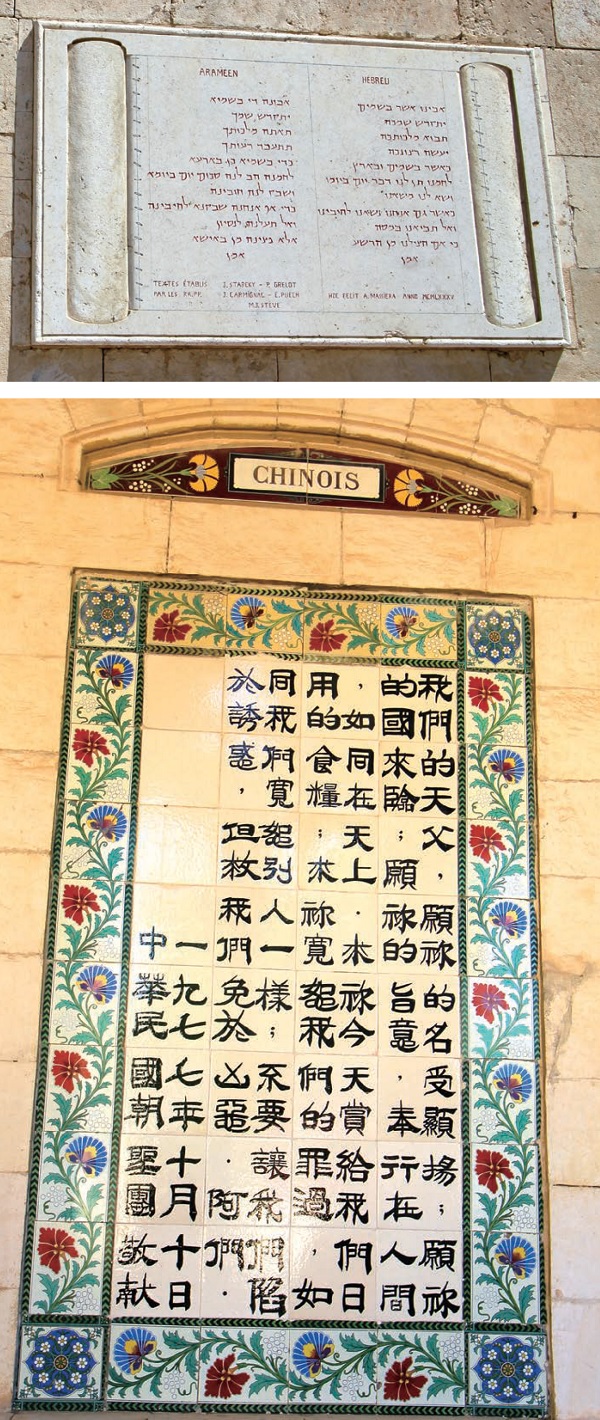
▲PATER NOSTER, which means "our Father", is the first sentence of the Lord's Prayer.
Mark's Room (Upper Room) is the place where Jesus and his disciples had the Passover meal in the past, and He instituted the Holy Communion here. Some of the beams in the house are carved with images of flying birds. This flying bird is very special. According to legend, when their chicks are hungry and have no food to eat, they will use their beaks to tear open their own chests and let them eat their internal organs. The sculptor used this as a metaphor for the sacrificial love of Jesus' crucifixion.

▲Mark’s Tower is the place where Jesus and his disciples had the Passover meal. Jesus instituted the Holy Communion here.
The Garden of Gethsemane means oil-pressing garden. There are many olive trees in the garden. It was a place where oil was pressed in the past, hence its name. It is located under the Mount of Olives on the east side of the Kidron Valley, facing the Golden Gate outside the temple. There is a large stone in the middle, which is said to be the place where Jesus prayed sadly on the night of the crucifixion. Next to the garden is the Church of All Nations, which was built with funds donated by 16 countries.
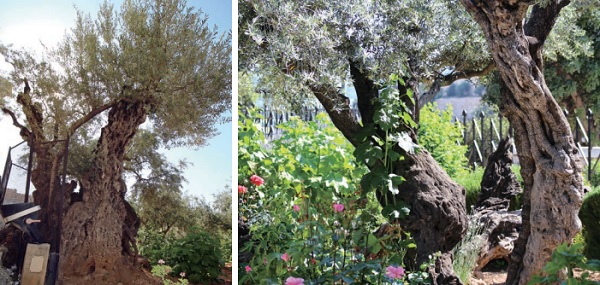
▲The Garden of Gethsemane is the place where Jesus prayed before his arrest and crucifixion.
Garden Tomb is believed to be the place where Jesus was crucified and buried. There is a hill nearby, which is shaped like a skull, perhaps Calvary (transliterated as Golgotha). We found a larger room in the Garden Tomb to observe Holy Communion together, and we could not help but burst into tears as we meditated on the great grace of the Lord.
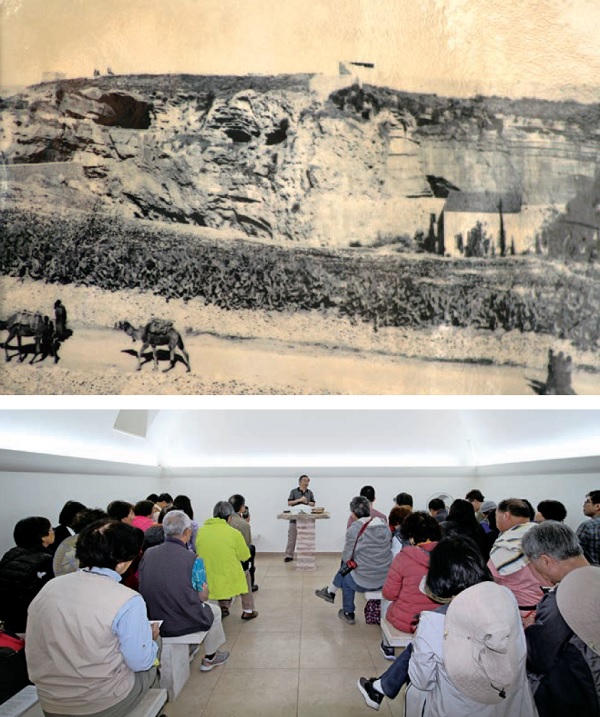
▲The Garden Tomb is believed to be the place where Jesus was crucified and buried. We observe the Lord's Supper reverently at the Garden Tomb.
5. Sea of Galilee, Jordan River and Mount of Beatitudes
The Sea of Galilee has four names. The Sea of Galilee (refer to Matthew 4:18) is named because it is in the Galilee region and means circle. The second name is the Lake of Chinnereth (see Numbers 34:11), which means harp, either due to its shape or because of its proximity to the area of the same name (see 1 Kings 15:20). The third name is Gennesaret (see Mark 6:53), because there is a flat land with the same name to the southwest of the lake. The fourth name is the Sea of Tiberias (refer to John 6:1), because there is the city of Tiberias on its west coast. Arabs often use this name.
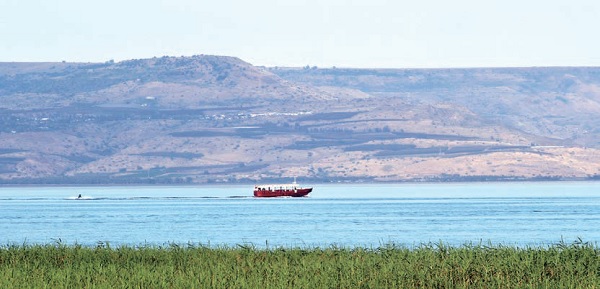
▲The Sea of Galilee was where the disciples fished.
Usually the sea surface is as calm as a mirror, the water tastes sweet and the lake is rich in fish. We chartered a boat to enjoy the trip, and also enjoyed the famous Peter's Fish at a restaurant on the lakeside. Some lucky group members even got an Israeli coin from the fish's mouth! This reminds one of the story of Jesus’ miracle 2,000 years ago, taking money from the mouth of a fish to pay taxes (see Matthew 17:24-27). In 1986, a big news happened that shocked the whole world: a 27-foot-long wooden boat from the time of Jesus surfaced and saw the light of day again.
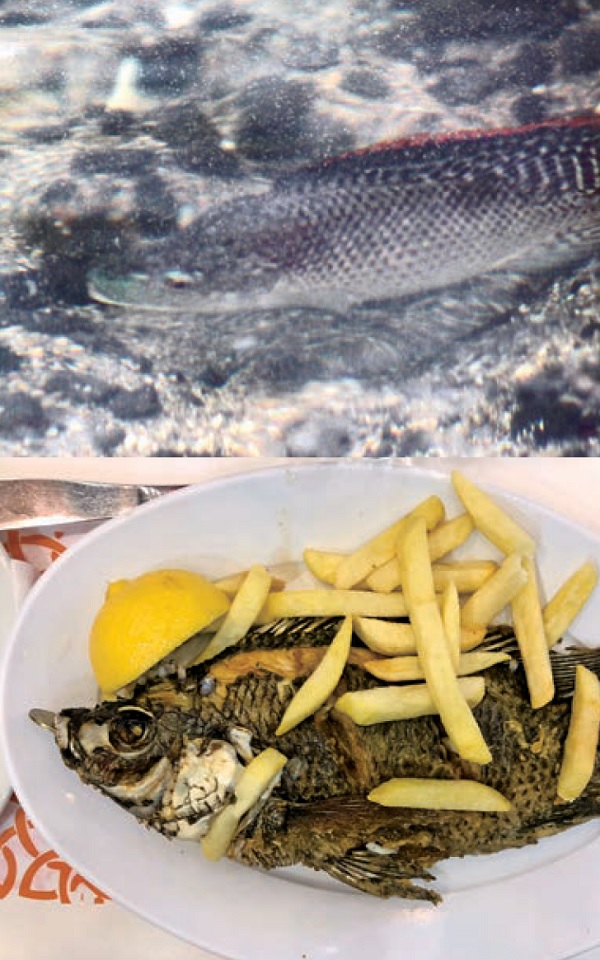
▲Peter fish.

▲A shipwreck in the Sea of Galilee from the time of Jesus was rediscovered in 1986.
The Jordan River means the river from "Dan" because it originates in the area of "Dan" between the two mountains of Mount Hermon and Lebanon. Joshua led the Israelites across the Jordan River (see Joshua 3:14; 4:1). Elisha ordered Naaman, the captain of the army who was suffering from leprosy, to bathe in this river seven times (see 2 Kings 5:10). Jesus was baptized by John in the Jordan River. Israel claims that Jesus was baptized in Yardeni, on the upper reaches of the Jordan River. There are several stone tablets engraved with scriptures in different languages describing the baptism of Jesus. One of them is the Chinese version of Mark 1:9-11.
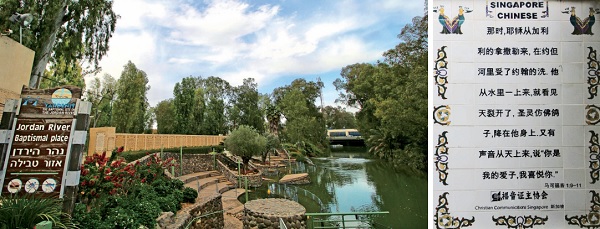
▲The Jordan River originates between the two mountains of Mount Hermon and Lebanon.
The Mount of Beatitudes is located north of the Sea of Galilee. According to legend, Jesus taught his disciples the Beatitudes here. There are many stone tablets engraved with the Eight Blessings in the Hall of Beatitudes. There are multiple octagonal designs in the hall, symbolizing the Eight Blessings.
6. Nazareth and nearby attractions
Nazareth is the place where Jesus grew up, so He is called Jesus of Nazareth (see Mark 10:47). Joseph opened a carpentry shop here, and Jewish carpenters at that time also worked as masons in building houses. Nazareth had a bad reputation, so Nathanael asked Philip if anything good could come out of Nazareth (see John 1:46). In the city we saw people demonstrating how to be carpenters and farmers, and women demonstrating how to spin thread to make needlework.
The Church of the Annunciation in Nazareth is where the angel Gabriel delivered the good news to Mary that she would be pregnant and give birth to a son. This is the largest church in the Middle East. The church's outer corridor displays murals of the Holy Child and the Virgin donated by different countries, with Mary wearing the national costume of that country.
7. The secret to a successful journey
1. Weather - It was almost completely sunny during the trip, with temperatures slightly higher during the day but cool at night.
2. Convenient location - There are many tourist destinations to choose from. As a Christian, if you have never visited the Holy Land before, your first choice should be Israel.
3. People and people - A total of 40 people participated in this in-depth trip to the Holy Land. Two of the tour guides were pastors. They were funny in conversation and had profound knowledge of the Bible and geography. They made the group members feel as if they were living in a land flowing with milk and honey every day. The streets in Jerusalem are narrow and congested, and the police often close the roads, so we had to make temporary diversions several times. The driver dexterously shuttled among the cars, passed the test, and won warm applause for his superb driving skills. We had to get up at 6 a.m. many days because of the rush, but we had no complaints. God also prepared Sister Yin, who loves photography, to volunteer to be the team’s photographer.
4. Preparation─The organizer spends a lot of time preparing. It has prepared a 112-page manual in Chinese and English for each member. It contains an itinerary overview, the address and telephone number of the hotel where you will stay every day, local contact information, a list of members and groups, an introduction to scenic spots with pictures and texts, and the hymns you sing during daily spiritual practice. We were reminded to read the book "Searching for the Meaning of His Homeland" (published by China Baptist Theological Seminary) written by the tour guide Pastor Zheng Yousheng before traveling; members were also advised to "eat up" on the Pentateuch and the four Gospels.
5. Divine help─We have to pay the fee in full half a year before the trip, so we have to decide early whether to participate. Some members of the group encountered unexpected events and were almost unable to make the trip. However, after praying to God for help, they were heard and the difficulty was solved. What a beautiful sight it is to see young people carrying heavy bags under the bright sun for their elders who are nearly seventy years old, helping them up and down the slopes, and wading in the waterway of Hezekiah! Having daily devotional time, relying on divine help, and being willing to help others are important keys to the success of this trip.
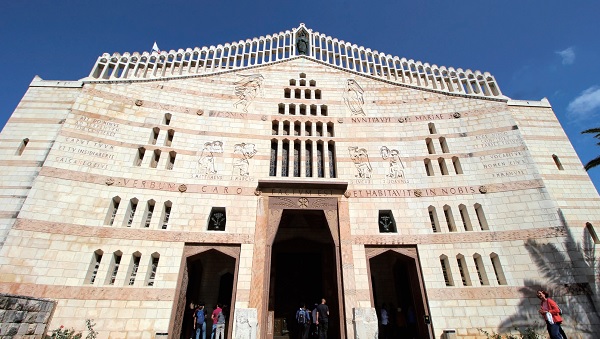
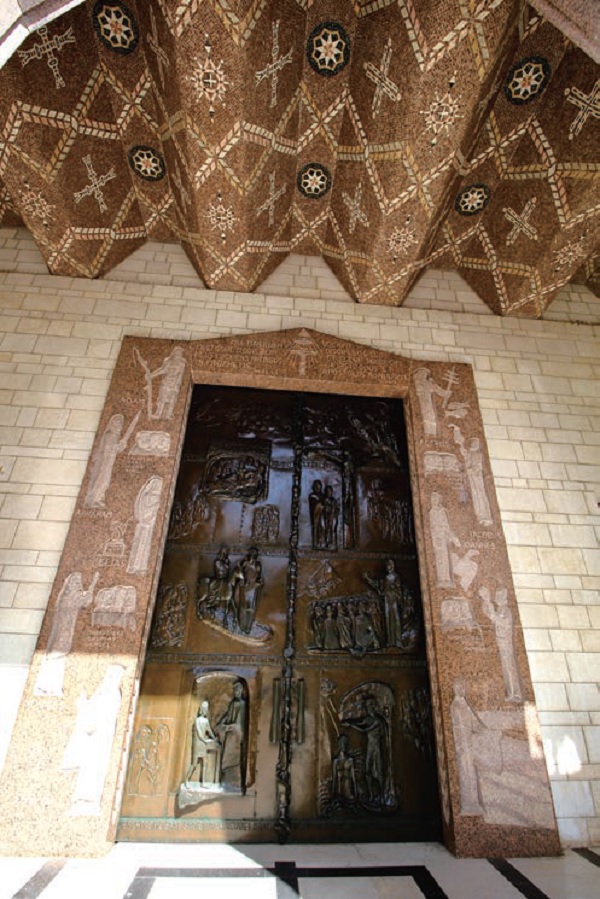
8. Sincere appeal
The author finds that he lacks knowledge of biblical geography, and I believe that many people who have traveled to the Holy Land feel the same way. Maybe we can recite the Beatitudes, but we cannot name the eight names of Jerusalem. I believe that adult Sunday schools in most churches only repeatedly teach the historical books in the Bible, but rarely teach the topics of biblical geography. It is recommended to consider starting a "Biblical Geography" or "Holy Land Overview" course to increase believers' biblical knowledge and glorify God's name.
 Yu GuoliangThe doctor retired after working for the United States Space Agency (NASA) for 38 years. He is a senior scientific researcher and former editor of the outreach unit of "The Kingdom of God" magazine. He is the author of "Physicists Read the Bible", "John's Code", and "Seven Difficulties of the Cross", and has translated 10 Christian books, including "Church Earthquake" co-translated with Gao Lili.
Yu GuoliangThe doctor retired after working for the United States Space Agency (NASA) for 38 years. He is a senior scientific researcher and former editor of the outreach unit of "The Kingdom of God" magazine. He is the author of "Physicists Read the Bible", "John's Code", and "Seven Difficulties of the Cross", and has translated 10 Christian books, including "Church Earthquake" co-translated with Gao Lili.
